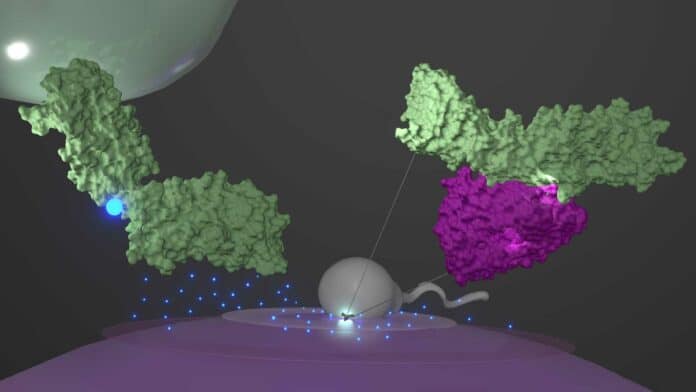Scientists have uncovered the precise moment of fertilization, solving the mystery of molecular events just before sperm and egg fusion. This process takes place without any problems. However, zooming into the processes during fertilisation at a molecular level reveal complexities.
Even with the best microscopes we have today, we can’t see all the tiny actions happening between the proteins during fertilization. So, we didn’t know precisely what started the fertilization process and what happened at the molecular level right before the sperm and egg joined together. But now, we’re starting to understand it better.
A group of researchers from ETH Zurich has, for the first time, created visual representations of the fertilization process in human egg cells. They achieved this by running simulations on powerful computers to mimic and observe the dynamics of fertilization.
The team ran simulations on “Piz Daint,” the supercomputer of the Swiss National Supercomputing Centre (CSCS). This is the first time they made the dynamics of these crucial processes in the fertilization of a human egg cell visible for the first time. According to their study, the researchers’ simulations have revealed important secrets.
Before this research, scientists already knew that the initial physical connection between the egg and sperm involves two proteins: JUNO on the outer membrane of the female egg cell and IZUMO1 on the surface of the male sperm cell. The belief was that when these proteins come together to form a complex, it triggers the recognition and sticking together of the germ cells, allowing them to fuse eventually.
However, based on the crystal structure, scientists have yet to be able to describe the mechanism clearly.
The ETH research team successfully replicated this process in their recent simulations. To make the in-silico (computer-based) experiment as realistic as possible, they had to simulate JUNO and IZUMO1 in a watery environment. However, in water, proteins move, and their interactions with water molecules affect how they bind. In some instances, the functions of the proteins can also be altered.
ETH Zurich Professor Viola Vogel said, “This makes the simulations much more complex, also because water alone already has a highly complex structure, but the simulations provide a more detailed picture of the dynamic of the interactions.”
The simulations conducted on the “Piz Daint” supercomputer lasted 200 nanoseconds each, revealing that the JUNO-IZUMO1 complex is supported by a network of more than 30 short-lived contacts. Each of these individual bonds lasted less than 50 nanoseconds. The researchers believe that gaining a deeper understanding of the dynamic network, where bonds form and break rapidly, opens up new avenues for developing contraceptives. It also provides insights into comprehending mutations that impact fertility.
After uncovering these network dynamics, the researchers explored how to disrupt the crucial protein binding. Zinc ions (Zn2+) emerged as key players in this process. In the presence of zinc ions, IZUMO1 takes on a boomerang-like structure, as revealed by the simulations. Consequently, IZUMO1 loses its strong binding to the JUNO protein. The researchers suggest that this could explain why the egg cell releases numerous zinc ions right after fertilization, known as a “zinc spark.” This surge of zinc is recognized for preventing additional sperm from entering the egg cell, preventing abnormal development.
Vogel said, “We can only find out something like this with the help of simulations. The findings that we derive from them would hardly be possible based on the static crystal structures of the proteins. The highly dynamic process of fertilization takes place far away from the equilibrium. As available protein structures show them embedded in the crystal, resources such as those at CSCS are essential to capture and understand these interaction dynamics.”
The simulations also helped solve another mystery: how naturally occurring folates and their synthetic counterparts, folic acids, bind to the JUNO protein. Expecting mothers are usually advised to take folic acid supplements for healthy fetal neural development.
However, lab experiments showed that JUNO doesn’t bind with folate in water, even though it is a folate receptor. Molecular dynamics simulations revealed that folate binding becomes possible only after IZUMO1 binds to JUNO. This new understanding has implications not only for structural biology but also offers a foundation for developing pharmaceutical ingredients.
According to the researchers, the decoded dynamic mechanisms of the interaction between JUNO and IZUMO1 proteins could pave the way for novel approaches to treating infertility, creating drug-based non-hormonal contraceptives, and enhancing in vitro fertilization technology.
Journal Reference:
- Pacak P, Kluger C, Vogel V: Molecular dynamics of JUNO-IZUMO1 complexation suggests biologically relevant mechanisms in fertilization. Sci Rep 13, 20342 (2023). DOI: 10.1038/s41598-023-46835-0
